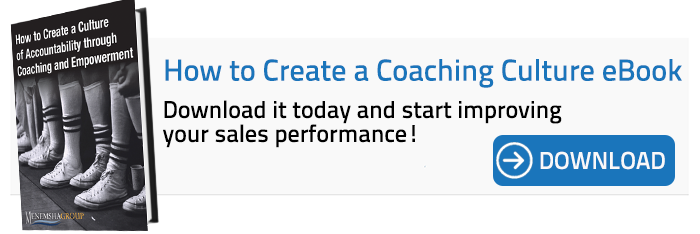1 min read
Most Staffing Firms are Not Built to Scale, But to Survive
Most staffing firms don’t struggle to scale because their teams aren’t working hard. They struggle because they don’t have a real go-to-market...

Imagine going to your family doctor for your regularly scheduled check up and after catching up and discussing your your holiday plans and how your kids are doing, your doctor instantly gives you a clean bill of health. Your doctor never asked any questions about how you feel, didn't listen to your heart or check your vitals. This would never  happen right, right? Doctors take their job and responsibility pretty seriously and because doctors take a holistic approach to diagnosing their patients.
happen right, right? Doctors take their job and responsibility pretty seriously and because doctors take a holistic approach to diagnosing their patients.
I often see staffing managers respond with quick knee-jerk reactions and quickly jump to quick conclusions when they see a dip in sales or recruiting activity and performance. For example, if a recruiting team is getting few submittals or few interviews the recruiting manager says "we need more candidate and more candidate interviews." Or, if the sales team is receiving fewer job orders, many sales leaders will say “we need to get more sales meetings and get more job orders!”
Instead, staffing leaders should be doing what doctors do, take a holistic approach to diagnosing activity and performance issues before prescribing a solution.
Here are 5 critical steps to diagnosing why your sales res and recruiters are under performing & how to prescribe solutions.
The first step in diagnosing a sales or recruiting performance or activity issue is to review key performance indicators (KPIs). Reviewing these three KPIs will help you identify and diagnose the issues and ultimately prescribe the proper solution(s).
This is where managers have to be ready, able and willing to "roll up their sleeves" and get their hands dirty. This requires digging into the data in your CRM/ATS. Keep in mind that in order to diagnose by stage you need to have a clearly defined sales process with verifiable outcomes. This will enable to you coach your sales reps to their sales pipeline and quickly and easily identify skill deficiencies and bottlenecks that may be hindering your sales performance not to mention your sales forecast.
To begin, compare sales velocity by stage, or how long it takes a job order to progress from stage 1 to stage 2. Assess how long it takes for one rep or recruiter vs. the next rep or recruiter. You want to compare it from recruiter to recruiter (keeping tenure & experience level in mind), across territories, accounts, verticals and/or industries, as well as over time. For example, if it used to take 6 days to go from stage 2 to stage 3 and now it takes 15 days, that may indicate something has changed within the buyer's journey that your sales rep is unaware but needs to account for. Finally, be sure to analyze conversion rates by stage. What you're looking for is, are there a large percentage of opportunities that aren’t making it past a certain stage or stages? What is happening at that stage that is causing candidates or clients to stall? What specifically are your reps and recruiters doing at that stage? What could and should they being at that stage?
One of the quickest and easiest exercises to diagnose a problem with a recruiter or sales rep-and the most revealing-is to simply listen in on their calls with candidates and customers. Ideally you should be conferenced into the call so that you can hear what the customer or candidate is saying on the other end of the phone and hear how your rep or recruiter is presenting and responding within the context of the conversation. Actively coaching is critical to diagnosing the root cause issue.
Once you’ve been on several calls with multiple recruiters and/or multiple sales reps you will develop a keen sense for their overall skill level and competencies including their strengths and weaknesses. To take it a step further you can continuously analyze your employees performance and progress for improving specific skills sets by adopting a training platform that allows you watch your employees skill sets in action by audio and video recording them rehearsing candidate and customer conversations.
With each set of sales and recruiting performance gaps, you can create "challenges" or role play scenarios for your teams to practice executing in those areas where they've struggled. For example, suppose you have diagnosed that your recruiters are struggling with moving candidates from the pre-close stage to the offer acceptance stage. You can have your recruiters practice rehearsing and role playing their candidate negotiations in front of their computer webcam and then you-the manager-can watch and listen to those recordings and see exactly where your recruiters and reps are falling short. From there, you can assign just-in-time training or additional coaching challenges so your people can master the required skills.
A win/loss postmortem process is key for staffing firms to identify why candidates accept and don't accept offers and why sales reps win and lose deals. A win/loss postmortem entails interviewing the candidate and customer at the conclusion of the sales or recruiting life cycle. The purpose is to get candid and unfiltered feedback from both parties. When a recruiter fails to deliver his or her candidate and when a sales rep loses a deal, you want to find out why. When a sales rep wins a deal, and a recruiter makes a successful placement, you want to know why.
By interviewing the customer you can find out why they chose you (or your competition) and your firm or your candidate. Was is something specific about the candidate or did it have to do with your sales process and how the sales rep conducted him or herself? In essence, you want to uncover the reasons for why the customer chose you over the competition and vice versa. If a rep lost a deal, what did the competition offer the prospect that your rep didn't? Did the sales rep lose because he or she failed to sell to the ultimate decision maker or did the rep fail to properly understand the customer requirements or was it another reason?
The answer to these questions will give you the insight you need to improve upon your strategy and how you execute on your next opportunity. This is yet another way in which sales reps and recruiters can improve their sales and recruiting effectiveness. Just as importantly, this process will allow you to identify and understand required competencies which you will want to incorporate into your sales onboarding strategy that you would have otherwise overlooked had you not done a win/loss postmortem.
There are many ways in which a manager can go about diagnosing why their sales reps or recruiters are under-performing. Download our ebook and learn how to take the coaching path and diagnose like a top performing leader and create a coaching culture.

1 min read
Most staffing firms don’t struggle to scale because their teams aren’t working hard. They struggle because they don’t have a real go-to-market...

In my previous post, How to Prevent Unexpected Contract Terminations, I shared how systemizing consultant and client check-ins at key milestones...

About a year ago, I was serving as the fractional revenue leader, managing sales and recruiting for a client.